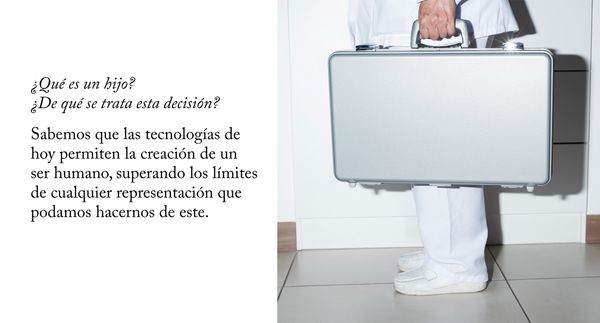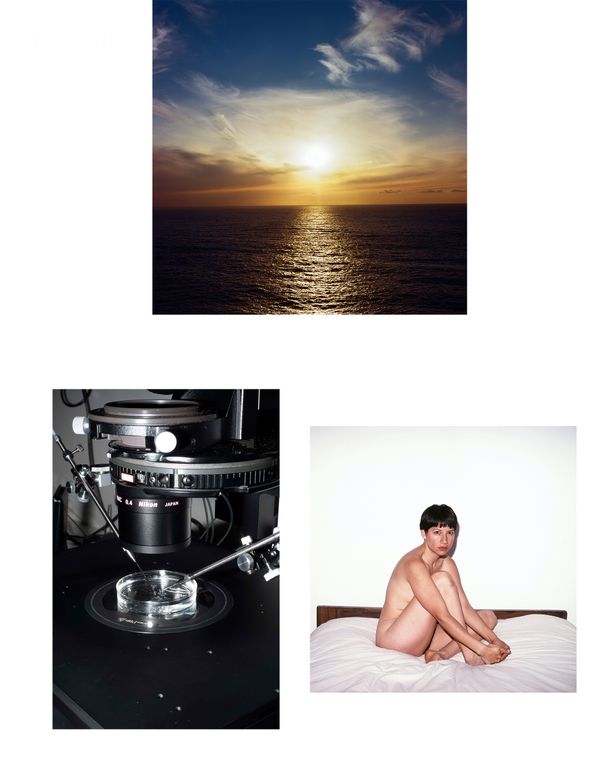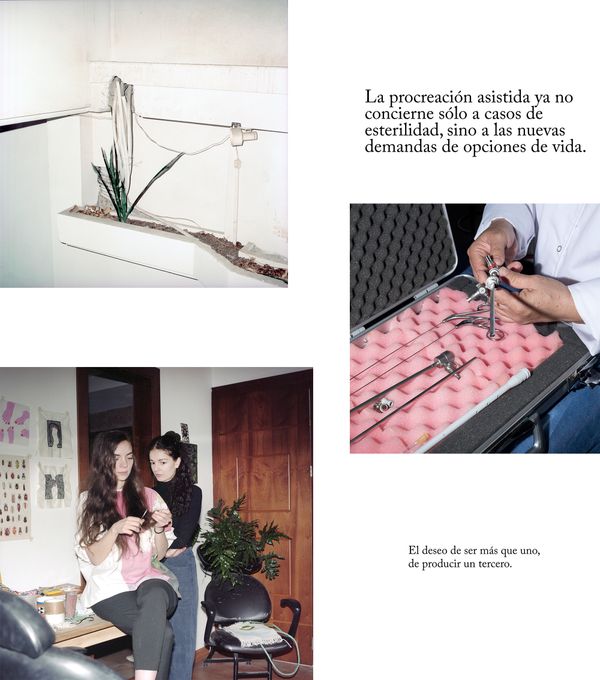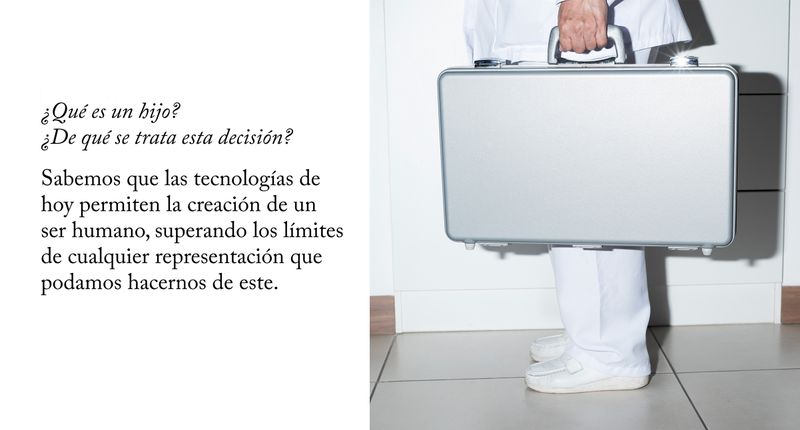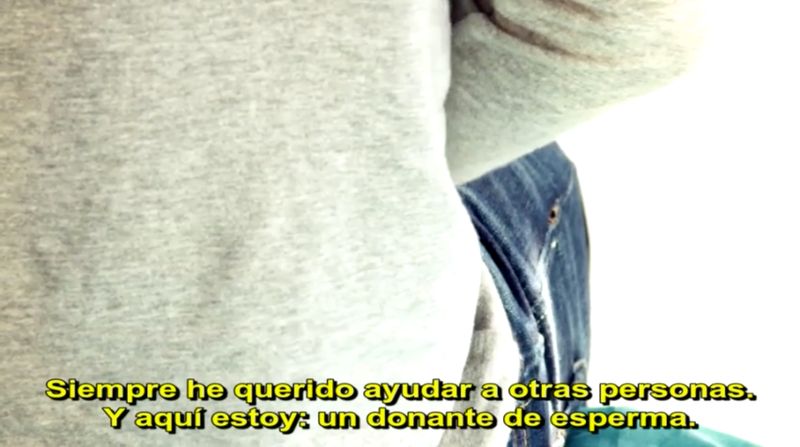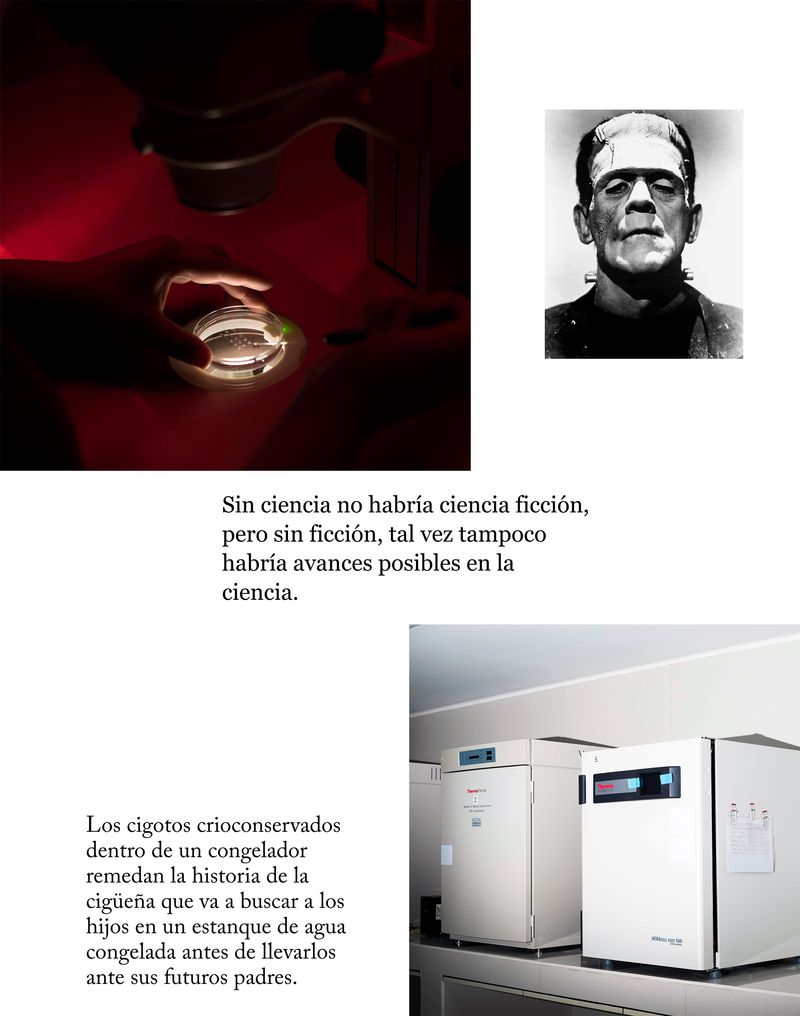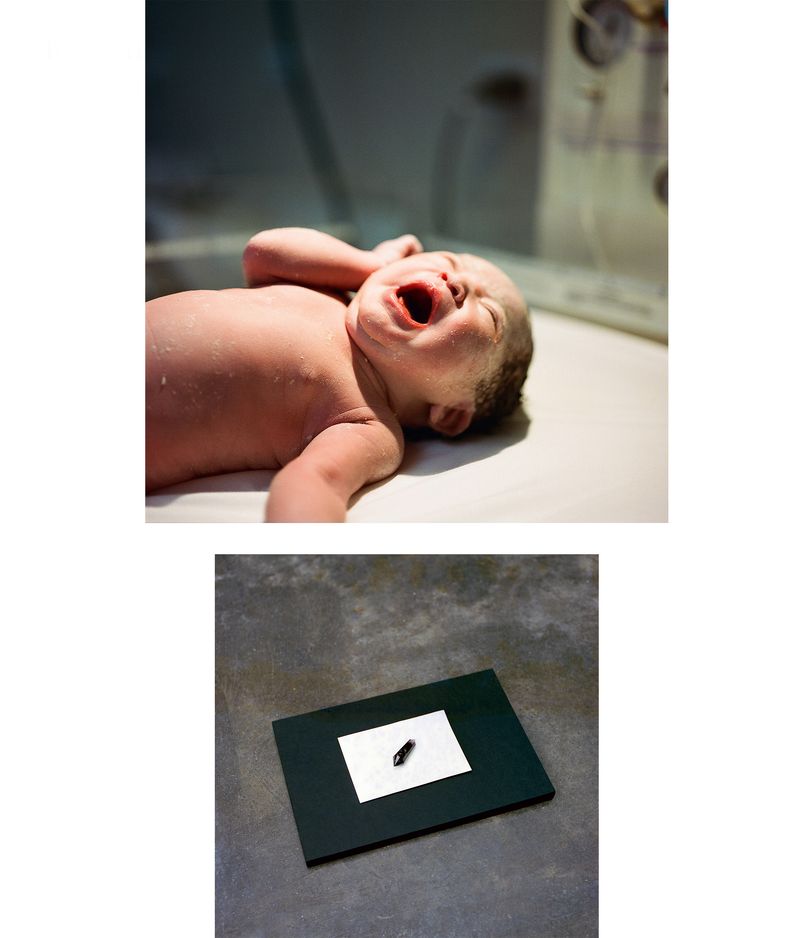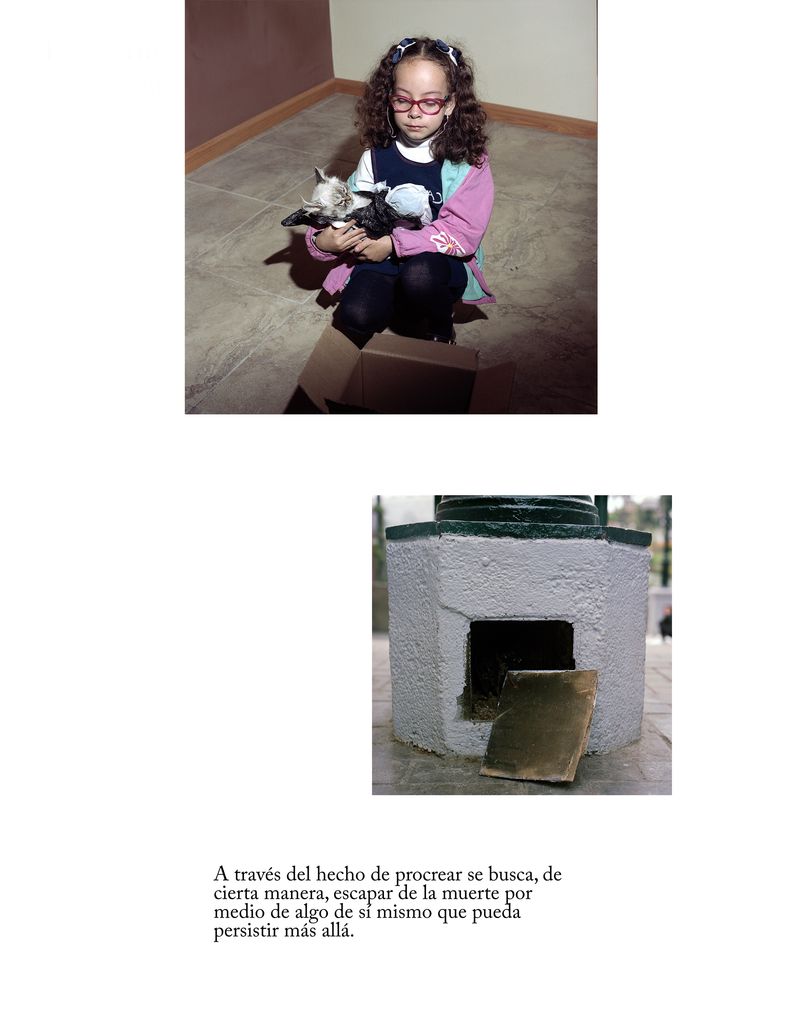HUMAN
-
Dates2019 - Ongoing
-
Author
-
Recognition
English below
Este es un proyecto a largo plazo, en el que investigo profundamente sobre las necesidad de reproducción del ser humano -en pareja o solo-, de forma natural y mediante la tecnología y otros medios.
Me pregunto, ¿qué es un niño? ¿De dónde viene la decisión de tener uno? ¿Cómo se fabrican los niños? Actualmente, alrededor del nacimiento de un niño, en ciertos casos hay muchas más personas que el padre y la madre, podemos nombrar al donante de esperma, la donante de óvulo o la mujer que ha realizado la gestación subrogada, sin contar a los médicos y biólogos.
Esta investigación cuenta con mucho material fotográfico, gráfico y textos, estos van transitando los territorios de las estructuras humanas de nuestra época. Las Técnicas de Reproducción Humana Asistida (TRHA) traen consigo modificaciones en las estructuras familiares, en las formas de lazo social e incluso en nuestras creencias y afectos.
La persona del mañana es hoy, las TRHA nos confrontan a una atemporalidad, a la ilusión de eternidad y de omnipotencia: podemos hacer que las vírgenes gesten hijos para sí mismas o para otras mujeres; podemos trasplantar úteros a los hombres para que pasen por la experiencia del embarazo. Cuando la ciencia interviene, tiene el poder de crear un mundo desconocido. Esta perplejidad la encontramos en Frankenstein, una alegoría de lo que puede traer el desarrollo científico, ¿Hasta dónde podemos llegar? A medida que la tecnología avanza, nos enfrentamos a realidades inédita, difícil de pronosticar.
Las TRHA resaltan lo que está presente en toda procreación: sexualidad y muerte, abren interrogantes ligados al comienzo de la vida, la reproducción, la diferencia de los sexos y de las generaciones, la filiación, entre otros., esto, junto a la biotecnología, incrementa cada día más el terreno de lo posible y lo “perfecto", esta nos permite intervenir en la naturaleza, modificarla sin tener un conocimiento completo de las consecuencias: podemos congelar embriones, que para muchas parejas son hijos en espera, eternizados fuera del tiempo de los mortales; podemos modificar el ADN, etc.
Esta investigación también indaga en las practicas que suceden fuera del marco legal, la bioética, los escalones de privilegio y objetualización de los cuerpos e historias personales (de los individuos fotografiados) que involucran creencias religiosas, presión social, fantasías hasta rozar la ciencia ficción, etc.
English
This is a long-term project, in which I deeply research the human being's need for reproduction -with a partner or alone-, naturally and through technology and other means.
I wonder, what is a child? Where does the decision to have one come from? How are children made? Currently, around the birth of a child, in certain cases there are many more people than the father and mother, we can name the sperm donor, the egg donor or the woman who has carried out the surrogacy, not counting the doctors and biologists.
This research has a lot of photographic, graphic and text material, these are passing through the territories of the human structures of our time. Assisted Human Reproduction Techniques (TRHA) bring modifications in family structures, in forms of social bond and even in our beliefs and affections.
The person of tomorrow is today, TRHA confront us with a timelessness, with the illusion of eternity and omnipotence: we can make virgins bear children for themselves or for other women; We can transplant wombs into men to go through the pregnancy experience. When science intervenes, it has the power to create an unknown world. We find this perplexity in Frankenstein, an allegory of what scientific development can bring. How far can we go? As technology advances, we are faced with unprecedented realities, difficult to predict.
The TRHA highlight what is present in all procreation: sexuality and death, they open questions related to the beginning of life, reproduction, the difference of the sexes and generations, filiation, among others, this, together with biotechnology , increases every day more the field of the possible and the "perfect", this allows us to intervene in nature, modify it without having a complete knowledge of the consequences: we can freeze embryos, which for many couples are children in expectation, eternalized outside the Mortal time; we can modify DNA, etc.
This research also investigates the practices that occur outside the legal framework, bioethics, the steps of privilege and objectification of the bodies and personal histories (of the individuals photographed) that involve religious beliefs, social pressure, fantasies even bordering on science fiction, etc.
Más información sobre este texto de origenPara obtener más información sobre la traducción, se necesita el texto de origen
Enviar comentarios
Paneles laterales
